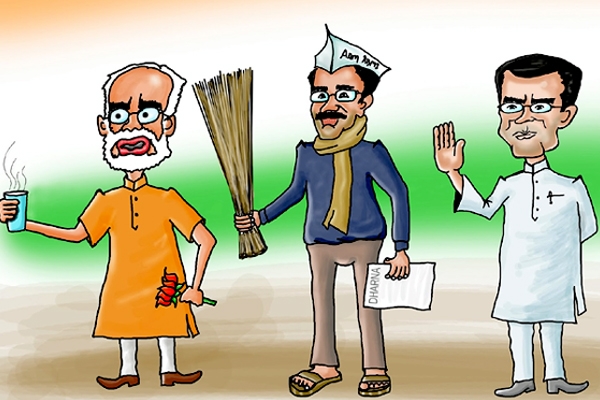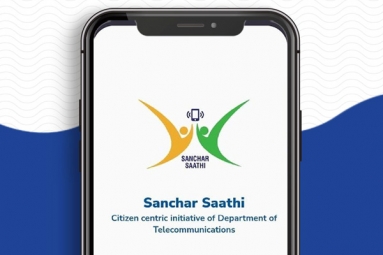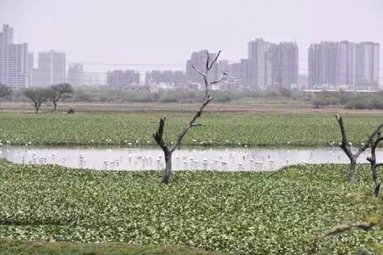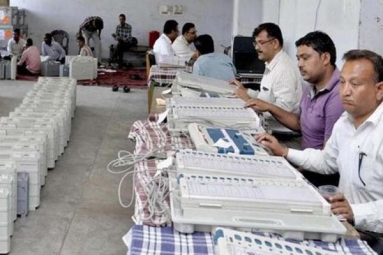
(Image source from: Five things to expect from exit poll predictions})
With the Great Indian elections finally over, the country now awaits the judgment day — the16th of May, Friday, 2014 with bated breath. With almost all polls predicting the worst drubbing for Congress and biggest triumph for BJP, it's now left to be seen how far the exit polls prediction will match up to the real outcome of election 2014.
Like every election year, all television channels have busied themselves with forecasts of exit polls with the help of extensive and complex data collected by survey agencies after each day polling. While their prediction might not altogether hit the bull's eye, here are a few things you can expect from these exit poll results in case they come true.
1. A bellow 100 tally for Congress could mark the end of Gandhi parivar
No one expects the grand old party of India to fare well in this election. But exactly how poorly it flogs is something to watch out for. Whether it will be a respectable defeat for the party or will it finish with fewer than 100 MPs as predicted by Narendra Modi is something that the country is waiting to see as the D-day impends. Blame it on anti-incumbency or anti-Rahul sentiments, but the defeat seems insuppressible.
The presence of Congress President Sonia Gandhi, who is credited for forming UPA2, was almost AWOL in this elections. She joined the campaign rather too late, cherry-picking her rallies, and canceling some owing to poor health or exhaustion. It wouldn't be wrong to say that the grand old party now stands precariously close to becoming obsolete, along with its obsession with a single political dynasty, its feudal power structures and its arrogance.
2. Modi factor, a ripple, a wave or a tsunami?
Although the exit polls for Uttar Pradesh and Bihar pinpoint that the BJP will only make sub-optimal gains in the states, a real Modi wave would mean sweeping 120 seats combined. It's in the Hindi heartland that BJP's largest gains are to be made. But if Mayawati, Mulayam Singh Yadav and Lalu Prasad decided to build a bulwark against the so-called Modi wave, then the tide could fall flat.
Whether it's a Modi ripple, a wave or a tsunami will be clear from two things: First, if BJP manages to sweep some swats from the southern states where the party's presence is negligible. Secondly, if the anticipated large vote shares in Uttar Pradesh and Bihar turns into reality. If either one of these fails to happen, know that the Modi wave was indeed overstated.
3. Can regional leaders prove that real power vests with the states?
The close prospect of a fractured mandate continues to fan the hopes of all regional parties and the smaller parties who might come together to form a federal front, just to keep a BJP-led government away.
A clear win for the NDA would require massive support from the regional parties, and vice-versa. A strong showing by the JD(U) in Bihar, the NCP in Maharashtra, the Asom Gana Parishad in Assam, the INLD in Haryana, the Deve Gowda faction in Karnataka, the National Conference in J&K and the SP and BSP in UP will not only open the doors for the third front, but will also signify that it’s time for the national parties like the BJP and Congress to reinvent themselves as now, it’s the states and their leaders who are the big stakers in national politics.
4. Will AAP finally understand that it misread the nation's pulse?
There is little denying the omnipresent factor of Narendra Modi in 2014 elections, beginning from his campaign for Delhi ahead of the Assembly elections in December to miraculously managing the momentum for seven long months.
But it was not Modi, but Arvind Kejriwal who suddenly made politics a buzzword for the layman. The party, initially, appeared to be capable, constructive alternative to the established political class, thanks to its spectacular debut in the Delhi Assembly elections that stimulated the anti-Congress wave.
However, as expected, if AAP fails to cinch more than a 4 or 5 per cent vote share in most states, it will be a lesson well learnt for the party and its dauntless supporters. Arvind Kejriwal's best bet would have been limited his General Election fight to Delhi and a few other major cities where they have recognition, rather than over-stretching and then losing badly, that would weaken their fight as well as credibility.
5. A 270-plus BJP will mean there’s no BJP, but Narendra Modi
If BJP's tall claims that NDA would cross the 300 mark, with the BJP itself missing the chance of forming a single-party government at the Centre by a whisker, comes true, the nay-sayers will have to throw in the towel. They will have to accept that the highly effective personalized campaign of Team Modi, the almost-perfect execution and the involvement of the Rashtriya Swayamsevak Sangh to carry out the on-the-ground network as well as image building and booth management paid off well. This won't just silence the doubting Thomases, but also clear the decks for a five-year government for Narendra Modi.
AW: Suchorita Choudhury














